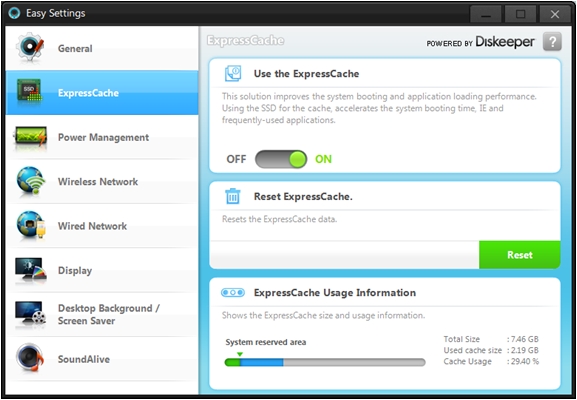Samsung ExpressCache
This is a technology to improve the performance and responsiveness of some models of Samsung notebook or ultrabook. It works by caching data that is written to or read from the systems main, traditional, mechanical hard drive.
The ExpressCache drive is typically only 24GB in size. The aim is to deliver significant performance improvements without incurring the cost of equipping the system with a full sized SSD hard drive, for example a 128GB SSD drive.
How Do you Configure ExpressCache?
The operating system should be installed to the main, larger hard drive as normal. Then use the Samsung Easy Settings manager to configure Express Cache settings.

Can I Upgrade the ExpressCache?
The Expresscache module on many Samsung systems cannot be upgraded. In this situation you cannot replace the chip or cache unit as it is directly soldered onto the motherboard.
Example: The Samsung NP530U3C-A07UK has an iSSD fixed cache module which cannot be upgraded. If the unit develops a problem, the motherboard will need to be replaced. You cannot fit a module such as Stone part code ECCHAR-279.
What Are the Limitations on ExpressCache?
The ExpressCache can only benefit the system performance if the data has been read before. This means that the system does not reach SSD-only performance levels.
Additionally, as the ExpressCache caching is controlled through software, the information stored on it is always unencrypted. Customers that use bitlocker or other encryption methods should be aware that data segments stored on the Expresscache are not encrypted and could potentially be forensically retrieved. Organisations in this case should check that the product meets their security needs.
Applies to:
- Samsung notebook and ultrabook products that use Expresscache or are fitted with an iSSD